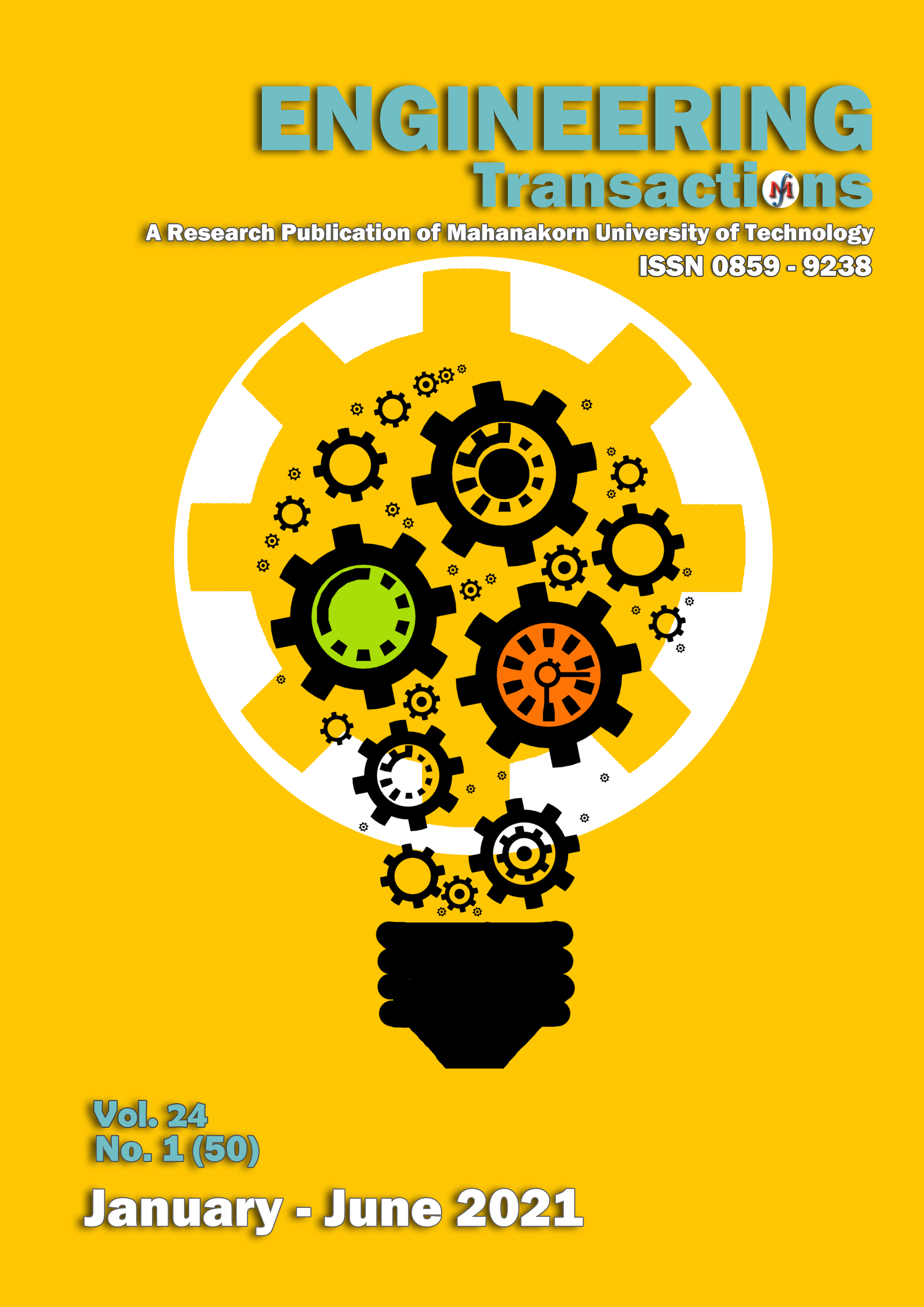Analysis of Channel Estimation with the Weight Least Squares Algorithm in the Reverse-Link Data Transmission for Multiuser-MIMO
Main Article Content
Abstract
This paper presents the analysis of channel estimation with the weight least squares algorithm in the reverse-link data transmission for Multiuser-MIMO. The weight least square algorithm is used for channel estimation method to compensate the signal distortion and to prevent the interference effect. The MIMO-based system has a higher spectrum efficiency during data transfer, which may interfere the original data with each other from the inserted external signal. The weight least square algorithm is used for channel estimation method to compensate the signal distortion. Experimental simulation results show that the signal to interference plus noise ratio (SINR) obtained from the weighted least squares algorithm for the channel estimation in the reverse-link data transmission is higher than that of the conventional least squares method.
Article Details
Copyright @2021 Engineering Transactions
Faculty of Engineering and Technology
Mahanakorn University of Technology
References
C.E. Hossain, M. Hasan, “5G cellular: Key enabling technologies and research challenges”, IEEE Instrumentation and Measurement Magazine, vol. 18, no. 3, pp. 11–21, Jun. 2015.
Y.S. Cho, J.W. Kim, W.Y. Yang, C. Kang, “MIMO-OFDM Wireless Communications with Matlab”, John Wiley & Sons, 2010.
V. Saxena, “Pilot Contamination and Mitigation Techniques in Massive MIMO Systems”, Department of Electrical and Information Technology, LTH , 2014.
สัมพันธ์ พรหมพิชัย, “หลักการสื่อสารข้อมูลยุคใหม่”, มหาวิทยาลัยเทคโนโลยีมาหานคร, 296หน้า.
C. Park, J. Chang, “Time-of-arrival source localization based on weighted least squares estimator in line-of-sight/non-line-of-sight mixture environments”, International Journal of Distributed Sensor Networks, vol. 12, no. 12, pp. 1-13, 2016
G. Y. Lu, A. Li, L. Swindlehurst, A. Ashikhmin, and R. Zhang, “An overview of massive MIMO: Benefits and challenges”, IEEE Journal Selected Topics Signal Processing, vol. 8, no. 5, pp. 742–758, Oct. 2014.
O. Elijah, C. Y. Leow, T. A. Rahman, S. Nunoo, S. Z. Iliya, “A Comprehensive Survey Of Pilot Contamination In Massive MIMO”, IEEE Communications Surveys & Tutorials, vol. 18, no. 2, 2016.
วรวุฒิ ฉิมพัด, สุชาดา สิทธิ์จงสถาพร และ สัมพันธ์ พรหมพิชัย, “การประมาณช่องสัญญาณด้วยวิธีกำลังสองน้อยที่สุดแบบถ่วงน้ำหนักสำหรับระบบไมโม”, EECON 42, 30 ตุลาคม – 1 พฤศจิกายน 2562, หน้า 285-288.
“Multi-user MIMO”, https://en.wikipedia.org/wiki/Multi-user_MIMO สืบค้นเมื่อ 15 พ.ค. 2564.
M. Ali, M. MOQBE, L. Wangdong, Al-marhabi Z. Ali, “MIMO Channel Estimation Using the LS and MMSE Algorithm”, IOSR Journal of Electronics and Communication Engineering, Vol. 12, Jan.-Feb. 2017.
R. Amiri, F. Behnia, “An Efficient Weighted Least Squares Estimator for Elliptic Localization in Distributed MIMO Radars”, IEEE Signal Processing Letter, vol. 24, no. 6, pp. 902-906, 2017.
วรวุฒิ ฉิมพัด, สุชาดา สิทธิ์จงสถาพร และ สัมพันธ์ พรหมพิชัย, “การประมาณช่องสัญญาณด้วยวิธีกำลังสองน้อยที่สุดแบบถ่วงน้ำหนักในการส่งข้อมูลเพื่อเชื่อมโยงย้อนหลังสำหรับระบบมัลติยูสเซอร์ไมโม”, EECON 42, 30 ตุลาคม – 1 พฤศจิกายน 2562, หน้า 325-328.


